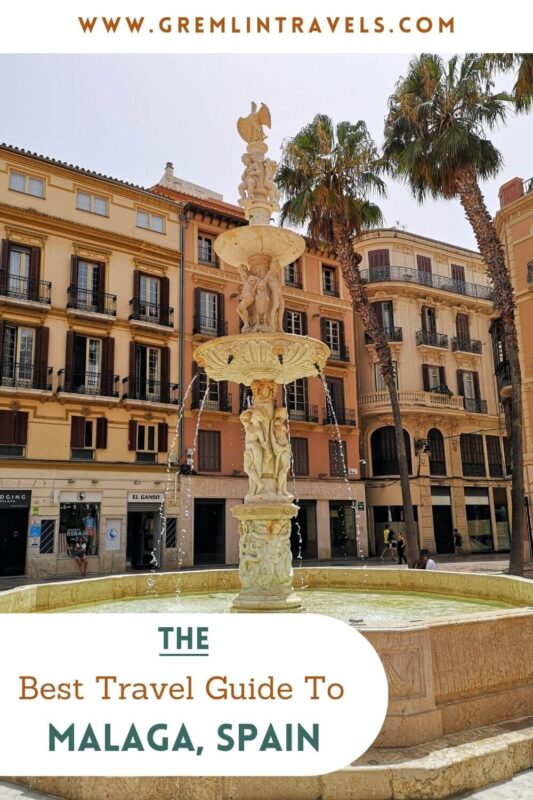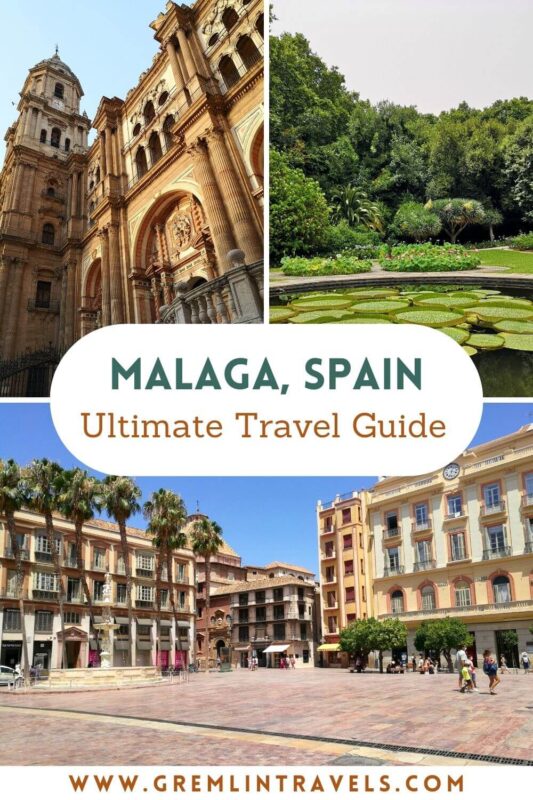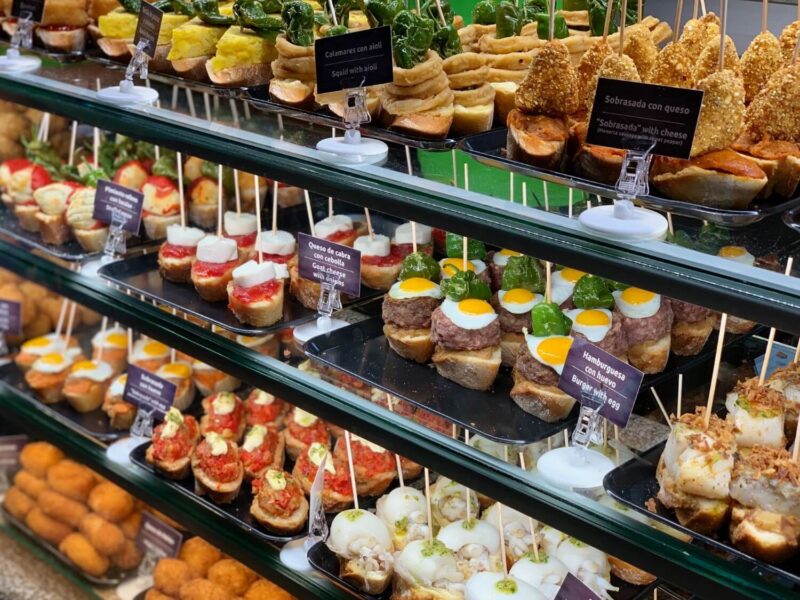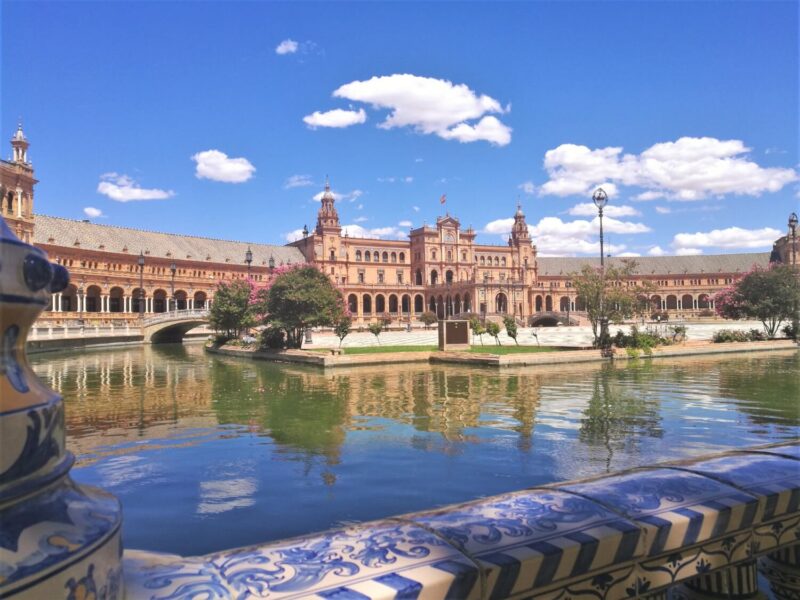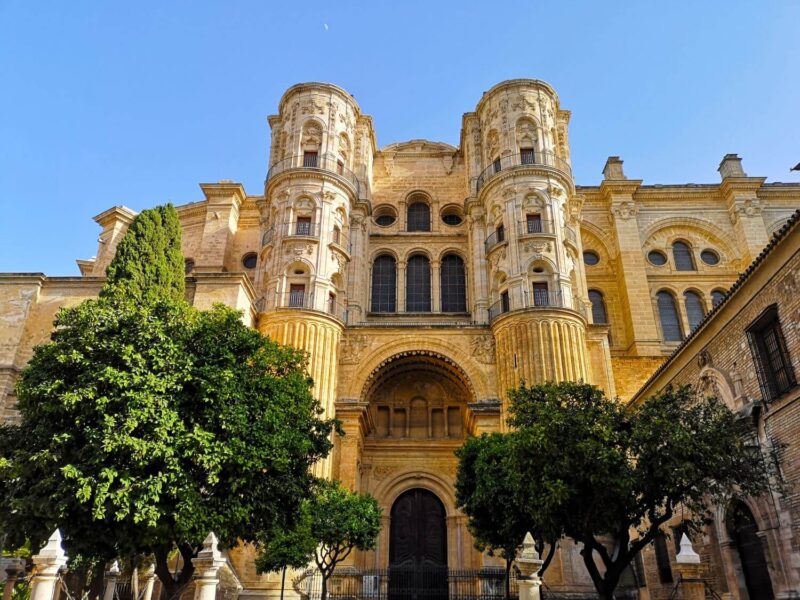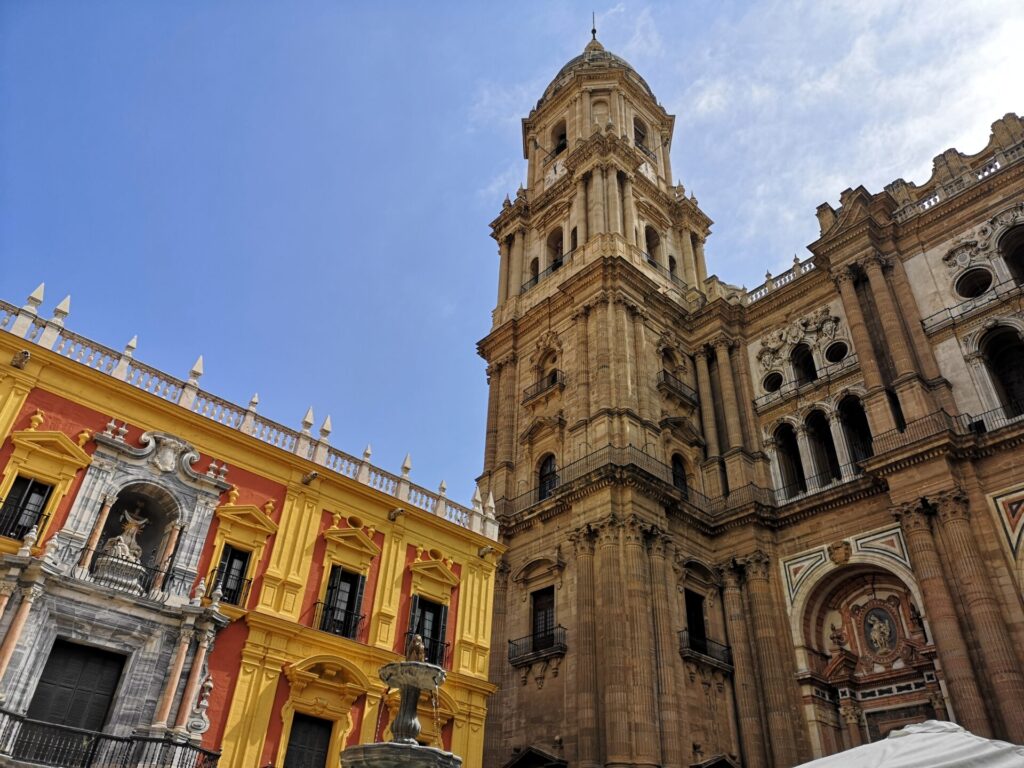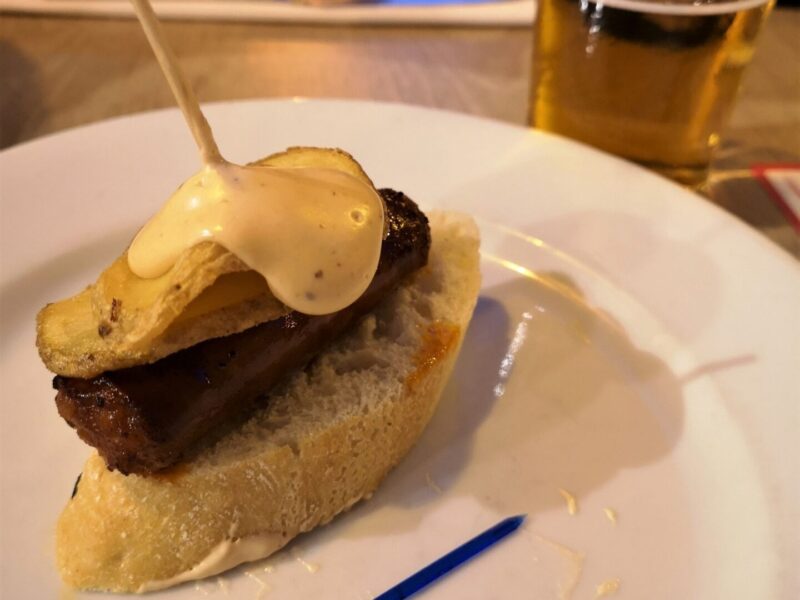Malaga City
Travel Guide
Welcome to our Malaga travel guide, where we explore this hidden treasure on the, otherwise very touristy, Spanish coastline of the Costa Del Sol. Brimming with culture, history, fine food and great beaches, Malaga city offers travellers the best of beach holidays and city breaks wrapped up in one package.
As the sixth-largest city in Spain, Malaga may not be so much of a hidden treasure, more just hiding in plain sight and often skipped by travellers for it’s neighbouring resort towns. However, the city is fast becoming a cultural hotspot within Spain, rivalling the likes of Seville and Barcelona, with a variety of great museums and art galleries, a growing number of top restaurants and historical sites including roman ruins and Malaga Cathedral. Alongside the long sandy beaches, local chiringuito’s (fish restaurants on the beach) and the recent development of the port area, the city offers travellers the chance to relax, and soak up some sun in the 300 days of sun a year, all while basking in traditional Spanish culture, and for a reasonable price too.
Malaga Travel Guide Contents
Check out our other Spain Travel Guides:
Barcelona Travel Guide | Madrid Travel Guide | Seville Travel Guide
Malaga Travel Guide
How to get to Malaga
Malaga Airport (AGP) is located 8km southwest of Malaga city. It is the main airport serving both Malaga and the Costa Del Sol and has three terminals, although 2 and 3 are the main ones in operation. The airport is modern, well equipped and has a good selection of duty-free shops, restaurants and cafes. Many visitors to Malaga city also arrive at Maria Zambrano train station via other cities and areas in Spain. Maria Zambrano is a large train station catering to both local and high-speed trains and has a shopping mall on site. The main ways of how to get from the train station or airport to Malaga city centre are:
Train – If you’re wanting to head to Malaga Centro train station or near this area then the Line C1 train connects the airport and train station. Taking 12 min and costing €1.80 ($2.10), the train is a quick and convenient option depending on your final destination
Bus – The Linea Express A leaves from outside departures every 30 min and runs into the city centre with several stops on the way, taking around 15-25min. It runs from 07:00 until midnight and costs €3 ($3.50) per person, one way. Tickets can be bought with cash from the driver onboard
Taxi – The most convenient option and available 24/7, taxis are metered but cost around €25 – €30 ($30-$35) for the city centre and take 15 min. They leave from outside arrivals at terminal 3
Uber/Ride-Hailing Services – There is good availability most of the time for ride-hailing services. A ride, depending on the company and time of day will cost in the region of $25 ($30) and will take 15 min from the airport to the city centre
From the Train Station – If you arrive at Maria Zambrano train station, you have three options for getting to the city centre. The first is to walk as Maria Zambrano is located around 20-25 minutes walk from Malaga Old Town. The second is to take a taxi which will cost around €5 – €8 ($5.75 – $9) to the city centre/Old Town. The third option is to take the bus line C2, which departs from the train station every 12 minutes near the Cercanias exit of the station, and stops along Paseo del Parque outside the Old Town. Bus tickets cost €1.40 ($1.60) per person, one way and can be bought on board, from the driver. If you are taking the train to Malaga from elsewhere in Spain, we recommend using Trainline Europe to book your tickets
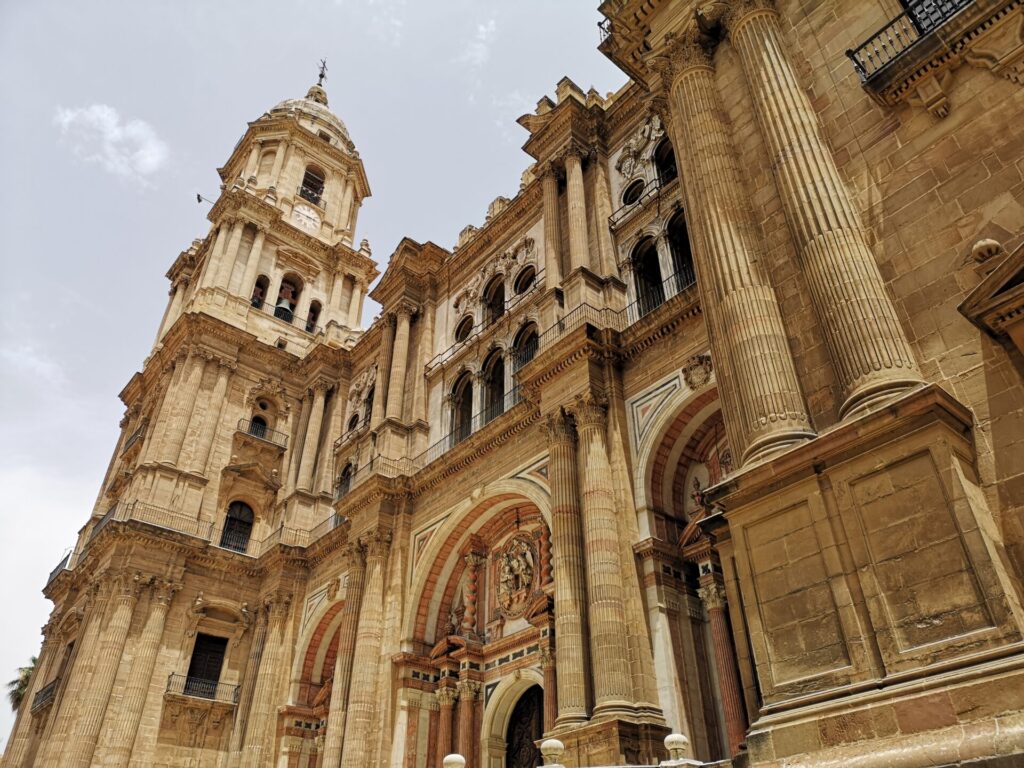
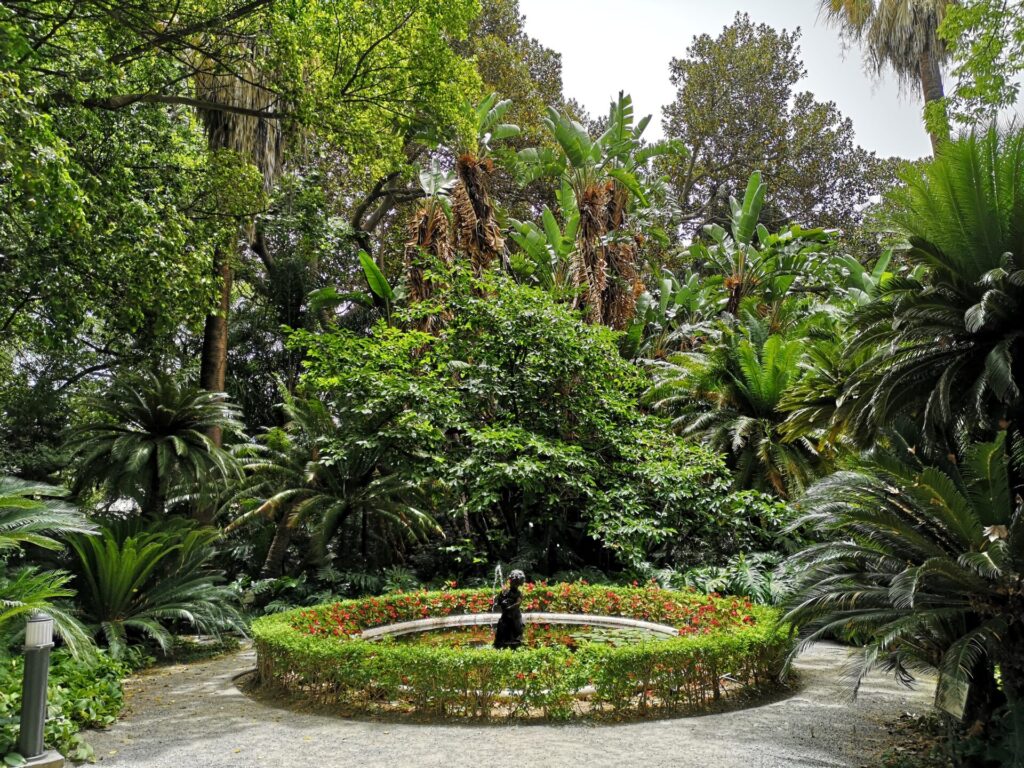
Areas to stay in Malaga
Malaga city has a relatively compact centre, making it convenient to get around and ideal for those wanting to be close to everything. The main choice of areas to stay in depends on whether being closer to the beach or town is more important. We would recommend being in the historical city centre, as the beach is still within walking distance. Here’s a guide to the most popular areas to stay in the city:
El Centro – This is the main old town/downtown area of Malaga city and where we would recommend first-time visitors to the city staying. Most of the main attractions are here, alongside a wealth of bars, restaurants and shops. The beach is around a 20-25min walk
La Malagueta – This is the beach and port area of the city, which is newer and has a good selection of bars and restaurants, catering more towards families. An ideal place to stay if you are with kids or are wanting to be closer to the beach
Maria Zambrano – This is the area surrounding Malaga train station, it’s a little quieter but good if you are going to be using the train regularly
Calle Larios – Although this area still has many old, historic buildings, this street and the surrounding area has seen more development and is the main shopping district in the centre, but also has many restaurants and bars. The market is also close by to this area
Soho – Located south of the central part of the city, Soho has become an arts-inspired area popular with creatives and young professionals and home to a growing number of boutique shops and restaurants
Accommodation in Malaga
The city of Malaga has a wealth of accommodation options to choose from, including hotels, apartments, hostels. There are several hotels located in the historical city centre from budget to luxury but most of the larger hotels are located near Malagueta beach. Apartments are abundant in the city centre and come in all shapes, sizes and budgets and offer travellers a great way to experience a real feel of life in Malaga. Prices are generally quite reasonable given its beach location but can soar in the peak season months of July and August so book well in advance to secure a reasonable rate at these times. Here are some of our top picks of where to stay in Malaga city:
Budget Hostel | The Urban Jungle Hostel – Located in the heart of Malaga’s Old Town, The Urban Jungle Hostel is the perfect budget accommodation option providing clean, simple and modern rooms, a roof terrace, a shared kitchen and various room options to choose from
Mid-Range Hotel | Hotel Boutique Teatro Romano – Centrally located, Hotel Boutique Teatro Romano has contemporary, light and well-equipped rooms, a simple breakfast offering and great service. The hotel is a solid mid-range option and the perfect base for exploring Malaga city
Apartment | Halcyon Days – For added comfort and a home away from home experience, look no further than Halcyon days. These beautifully designed apartments are centrally located and offer guests all the comforts of home including a well-equipped kitchen and washing machine without compromising on location
High-End Hotel | Hotel Molina Lario – This four-star hotel is well-known in Malaga for being one of the best hotels in the city. This family-run hotel has recently been refurbished to a high standard which, alongside the great service, rooftop bar and pool and beautiful rooms, make it the perfect option for those wanting something special for their stay in Malaga
Luxury Hotel | Gran Hotel Miramar – For absolute luxury and a plethora of facilities, Gran Hotel Miramar is our best pick. Located just off Malagueta beach, but still, within walking distance to the town, this hotel has a superb pool and garden, a spa, elegant, well-equipped rooms and exceptional service

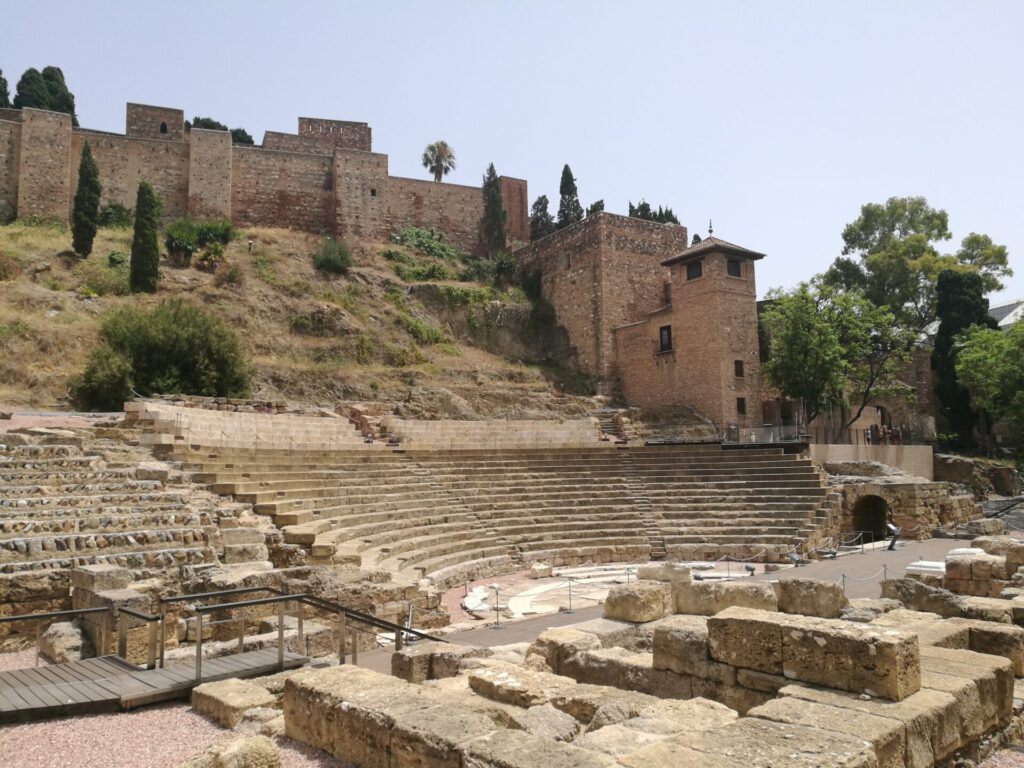
How to get around Malaga
The city centre of Malaga is flat, well maintained and largely pedestrianised so it’s a dream to walk around, making this our preferred method of getting around. Even the beach is close by and the walking route through parks and the port, also make this walk very enjoyable. However, there is a good network of public transport, should you need it. Here are the most popular options for getting around Malaga city:
Train – Although there is only one train station in Malaga, Maria Zambrano station, the train is still worth mentioning as it is popular with locals and tourists for getting to other Spanish towns and cities. Tickets can be bought online (we recommend buying tickets through Trainline Europe) or through ticket desks in the station and vary in price depending on distance, train type and speed
Metro – The metro in Malaga has just 2 lines that cater to residential areas, connecting them with the train station. There are plans for it to be extended in the future but at present, its routes aren’t commonly used by visitors to the city. Tickets cost €1.35 ($1.50) each
Bus – A comprehensive bus service runs throughout the city, connecting to outlying suburbs, generally operating from around 06:00 until 23:30/00:00. Tickets cost €1.40 ($1.60) one way and can be bought on board from the driver. If you’re making multiple journeys, you can buy a 10 journey ticket, which reduces the price to €0.84 ($1) a ticket. You can buy these (known as bonobos) from Estancos and newspaper kiosks throughout the city
Taxi – Readily available across the city, taxi fares start with a daily base rate of €1.55, ($1.80) plus €0.86 ($1) per km. The tariff between 21:00 and 06:00 is higher and there is always a minimum charge. Taxis offer a way to get to further afield attractions or are useful if there is a group of people together
Ride-Hailing App – Readily available across the city, ride-hailing apps including Uber and Cabify offer a quick and convenient taxi option, generally with reduced fares to standard taxis
Things to do in Malaga
Malaga has a variety of sights, activities, museums and attractions to enjoy, there is something to suit everyone. We’ve put together a compact list of the top 5 things to do in Malaga city to help you plan your trip:
Malaga Cathedral – Built between 1528 and 1782, Malaga Cathedral is a landmark of the city and has the feature of one tower, having originally been designed with two. Entry to the cathedral and museum is €5 ($5.85) per person
Botanical Gardens – Originally built in 1855 and covering 23 hectares, the Jardin Botanico – Histórico La Concepción offers visitors tropical gardens, a cactus garden, lily ponds and lots more. Entry is €5.20 ($6.10) per adult
Malagueta Beach – At 1.2km long, this beach has plenty of space for everyone. Soft sand and calm waters sit alongside Spanish restaurants, palm trees and a tidy promenade
The Alcazabar – Built in the early 11th century, this palatial fortification that forms The Alcazabar of Malaga is the best-preserved Alcazabar in Spain. Tickets cost €3.50 ($4) per person
Picasso Museum – With Malaga being the home of Pablo Picasso, this museum opened in 2003 and has 285 works donated by his family. Tickets start from €9 ($10.50) per adult, which is for the permanent exhibition
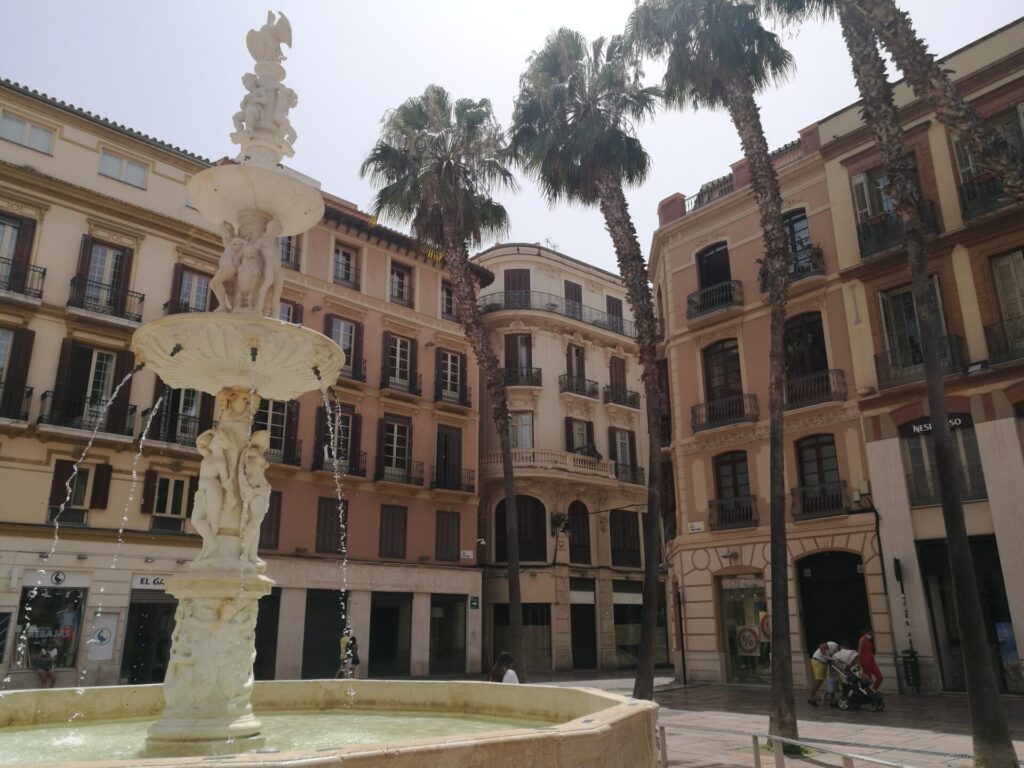
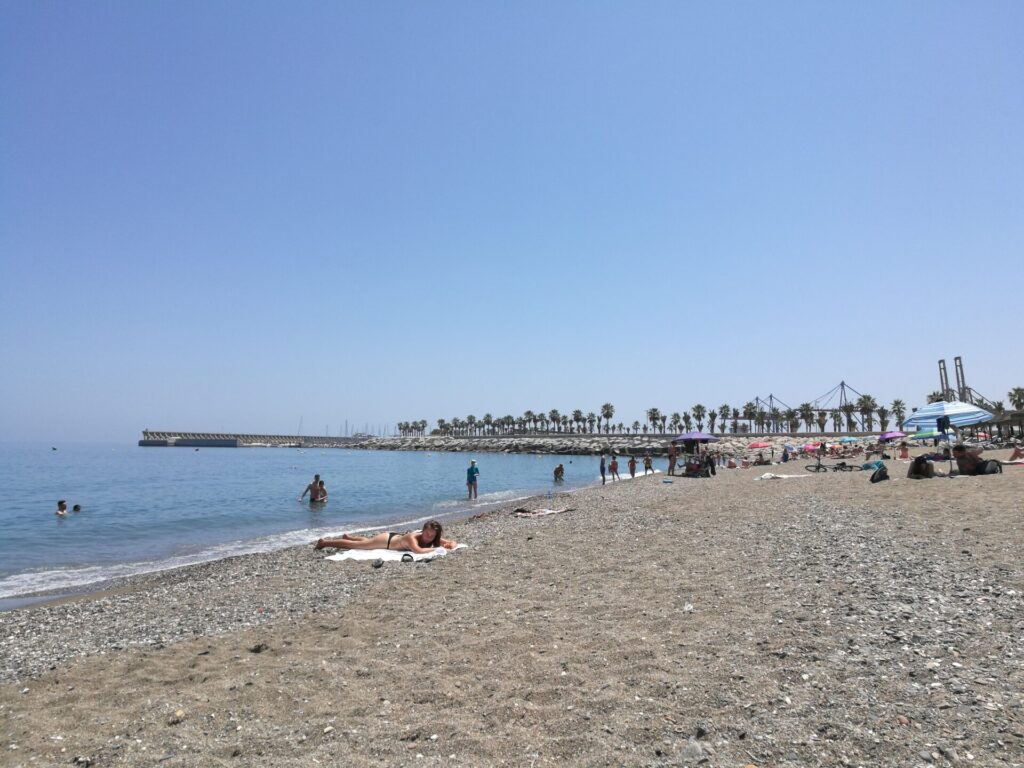
What to eat in Malaga
Malaga has a thriving mix of restaurants, bars and cafes serving up traditional Spanish fare, seafood and a mix of international cuisines. The city has just under 2500 restaurants, many of which are Michelin recommended and one a Michelin star. Across the city, the standard of food served is high, with the historical old town hosting a variety of traditional restaurants and bars. There is generally something for everyone across the diverse range of restaurants in Malaga. The port area has a mix of more international and chain restaurants, making it ideal for families with younger kids. If you’re looking to try some of the delicious local food, then here are our top picks:
Espeto – Popular along the beach in the many chiringuitos, this dish is sardines that have been skewered and then roasted over a barbecue pit which is usually in the form of an old fishing boat
Gazpacho – A popular dish across Spain, Gazpacho is a cold tomato soup that is perfect on hot summer days
Fritura Malaguena – Best eaten by the beach, this dish is a plate of lightly fried fish which commonly consists of squid, anchovies and sometimes a white fish. Squeeze over some lemon and it’s ready to eat
Gambas al pil-pil – A dish of fresh prawns fried in an oily sauce of garlic, paprika, fresh chillies and white wine. Make sure you have plenty of bread to mop up the sauce after!
Ensalada Malaguena – A common dish served throughout much of the city, especially in tapas bars, it is a salad of cold potatoes mixed with salt cod, onion, green olives, and oranges
Money - Malaga Travel Costs
The currency in Malaga is the Euro (€). Credit & Debit cards are widely accepted throughout Spain and there are plenty of ATMs that accept foreign cards. A service charge is generally not added to the bill so you can leave a tip if you are happy with the service. A tip of 5-10% is the norm and you can round up for taxis. Malaga is a fairly priced city, particularly given its proximity to some of Spain’s more touristy beach areas. It is suitable for both the budget and luxury traveller and offers something for everyone. Here’s a guide for average prices in Malaga (per person) for:
A local draught beer – €2-€3.50 ($2.50-$4)
A coffee – €1.50-€2.50 ($1.80-$3)
Espeto (skewered sardines) – €4-€6 ($5-$7)
Budget restaurant meal – €10-€18 ($12-$20)
Mid-range restaurant meal – €20-€40 ($23-$47)
High-end restaurant meal – €50 ($58+)
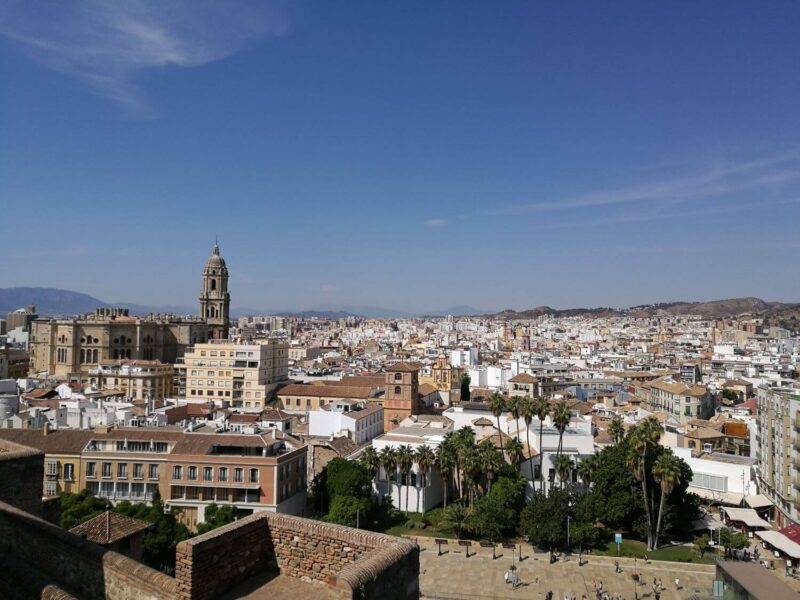
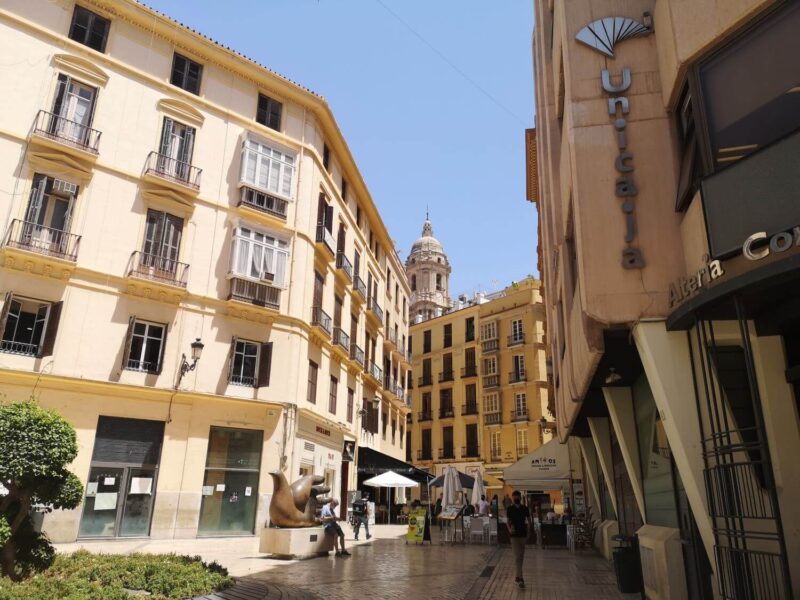
When to go to Malaga and for how long
The best time to visit Malaga city is from May to June or from September to October when the weather is warm but not too hot and there are fewer crowds out of the peak season. Malaga enjoys almost 300 days of sun a year, making it one of the sunniest cities in Europe and suitable as a destination to enjoy some warmth and sun in Spring or late Autumn. Malaga has plenty to see and do but is also a compact city so a trip of 3-4 days should give most people enough time to enjoy the city, its sights and amazing food. Alternatively, if you are looking to also enjoy the beach and spend a few days relaxing in the sun, then a week would give time for this, as well as enjoying the city sights. Our weekend in Malaga itinerary is a good base for stays of 2 days or more in Malaga with a guide on what to do and where to eat.
Local language and phrases
The language in Malaga is Spanish. However, being a popular tourist destination, many Spanish people, particularly those in work that caters to tourists, speak good English. We still recommend that you learn a few key Spanish words and phrases though, to help you get by. Check out our more general Spain travel tips for some of the most useful words and phrases you’ll need in Spain
Malaga travel tips
– Malaga is a safe city and is safe for lone travellers, including lone females
– There are a range of places to eat including those specialising in vegetarian, vegan and gluten-free diets
– The tap water is safe to drink
– Malaga Airport offers Covid-19 PCR & Antigen tests for those that require them, however, slots can get booked up very quickly so it is advisable to book well in advance if you require one
Malaga travel guide written in September 2021
This site uses affiliate links. When you click on a link and purchase an item, we may be compensated on qualifying purchases. However, this is at no extra cost to you. See our affiliate disclosure for further information.
Malaga Travel Articles
Malaga Walking Tour Videos And Maps
Check out our Youtube Channel for more Malaga walking tours, and tours for other destinations too.
Malaga City Route
A walking tour video highlighting the sights of Malaga historical city centre and accompanying map showing the route we walked
Malaga Seafront Route
A walking tour video of Malaga seafront (Malagueta beach) and accompanying map showing the route we walked
Pin this Malaga Travel Guide to save it for later!
